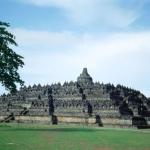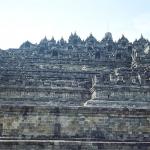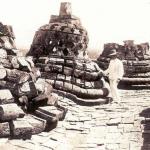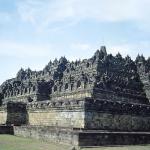Borobudur - A photographic essay

Located on Indonesia's island of Java, twenty-six miles northwest of Yogyakarta, the ancient sanctuary Borobudur is the world's largest Buddhist monument. Dating from the mid eighth century AD, and constructed over a period of over a hundred years, Borobudur was mysteriously abandoned early in the tenth century.
Image © 2000 Robert Tompkins, Travel, Ink.
A story told with photos.
 ThingsAsian
ThingsAsian



















